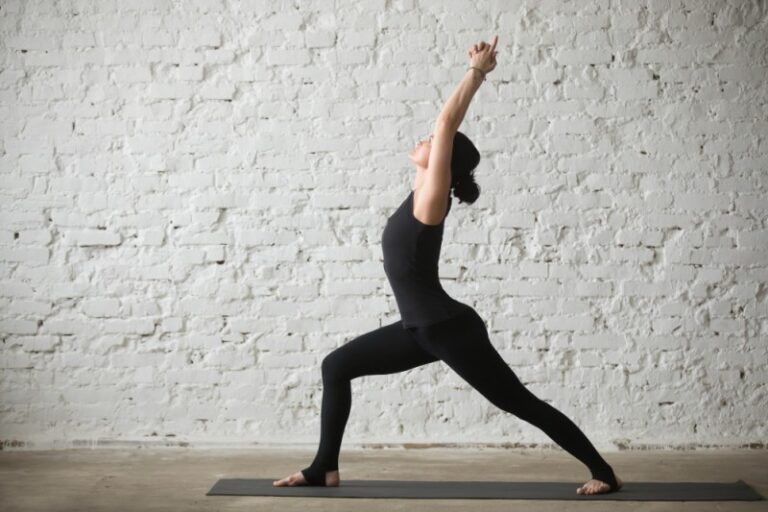Are you ready to unleash your inner warrior? Warrior Pose, also known as Virabhadrasana, is a powerful yoga posture that not only offers physical strength and flexibility but also cultivates mental focus and resilience. In this fast-paced world, it’s essential to find ways to center ourselves and tap into our inner strength. Warrior Pose does just that. Whether you’re a seasoned yogi or a beginner looking to embark on a new fitness journey, this pose is a must-try. In this article, we will explore the correct alignment and step-by-step instructions to help you master the Warrior Pose. Not only will you learn how to strike the pose, but you’ll also discover the numerous benefits it offers for both your mind and body. So, grab your yoga mat, put on your warrior spirit, and let’s dive into the world of Warrior Pose.
What is the Warrior Pose in Yoga?
The Warrior Pose is a standing yoga posture that symbolizes strength and determination. It is a part of the popular Sun Salutation sequence and is commonly practiced in various yoga styles, including Hatha, Ashtanga, and Vinyasa. The pose is named after the fierce warrior Virabhadra, a mythical character from Hindu mythology. The Warrior Pose has three variations: Warrior I (Virabhadrasana I), Warrior II (Virabhadrasana II), and Warrior III (Virabhadrasana III). Each variation has its own unique alignment and benefits.
How to Do the Warrior Pose / Virabhadrasana
Warrior Pose I (Virabhadrasana I)

To begin, stand at the top of your mat with your feet hip-width apart. Step your left foot back, keeping it at a 45-degree angle. Bend your right knee to a 90-degree angle, making sure your knee is directly above your ankle. Press your back foot firmly into the ground, keeping your heel lifted. Engage your core and lengthen your spine. Raise your arms overhead, palms facing each other. Gaze forward or upward, depending on your comfort level. Hold the pose for 5-10 breaths, then switch sides.
Warrior Pose II (Virabhadrasana II)

From Warrior I, open your hips to the side by rotating your back foot to a 90-degree angle. Your front heel should align with the arch of your back foot. Extend your arms out to the sides, parallel to the floor, palms facing down. Keep your shoulders relaxed and your gaze over your front fingertips. Sink deeper into the pose by bending your front knee, making sure it stays directly above your ankle. Hold the pose for 5-10 breaths, then switch sides.
Warrior Pose III (Virabhadrasana III)

Begin in Mountain Pose at the top of your mat. Shift your weight onto your right foot and lift your left leg off the ground, extending it straight back. Simultaneously, hinge forward at your hips, bringing your torso parallel to the floor. Keep your arms extended forward, palms facing each other or towards the ground for balance. Engage your core and lengthen your spine, creating a straight line from your head to your extended heel. Hold the pose for 5-10 breaths, then switch sides.
Benefits of practicing Virabhadrasana / Warrior pose
The Warrior Pose offers a wide range of benefits for both your mind and body. Here are some of the key benefits you can expect from regular practice:
1. Strengthens the lower body: The Warrior Pose engages the muscles in your legs, including the quadriceps, hamstrings, and glutes. Regular practice can help tone and strengthen these muscles, leading to improved balance and stability.
2. Increases flexibility: As you sink deeper into the pose, you stretch the muscles in your hips, groin, and shoulders. This helps to improve flexibility and range of motion in these areas.
3. Improves posture: The Warrior Pose encourages proper alignment of the spine and shoulders, which can help improve posture and alleviate back pain caused by poor posture.
4. Boosts mental focus: Holding the Warrior Pose requires concentration and mental focus. By focusing on your breath and body alignment, you can cultivate a sense of calm and mental clarity.
5. Builds resilience: The Warrior Pose challenges your physical and mental limits, teaching you to stay present and focused even in challenging situations. This can translate into increased resilience and the ability to navigate stressful situations with ease.
6. Promotes mindfulness: The practice of Warrior Pose encourages mindfulness by bringing your attention to the present moment. This can help reduce stress and anxiety, promoting a sense of overall well-being.
Common mistakes to avoid while doing the Virabhadrasana
While practicing the Warrior Pose, it’s important to be mindful of the following common mistakes to ensure proper alignment and prevent injury:
1. Overarching the back: Avoid arching your lower back excessively in Warrior I and Warrior II. Instead, engage your core muscles and lengthen your spine to maintain a neutral position.
2. Collapsing the front knee: In Warrior II, make sure your front knee stays directly above your ankle. Avoid letting it collapse inward or extend past your toes, as this can strain the knee joint.
3. Tension in the shoulders: Keep your shoulders relaxed and away from your ears in all variations of the Warrior Pose. Avoid hunching or tensing the shoulders, as this can lead to unnecessary strain.
4. Neglecting the breath: Remember to breathe deeply and evenly throughout your practice. Avoid holding your breath or shallow breathing, as this can limit the benefits of the pose.
Precautions for practicing the warrior pose
While the Warrior Pose offers numerous benefits, it’s important to practice with caution and be aware of any contraindications. If you have any of the following conditions, consult with a healthcare professional before attempting the pose:
1. High blood pressure: If you have high blood pressure, avoid raising your arms overhead in Warrior I, as this can increase blood pressure further. Keep your arms extended forward or alongside your body instead.
2. Knee or hip injuries: If you have any knee or hip injuries, modify the pose as needed to avoid putting excessive strain on these joints. Use props such as blocks or cushions for support if necessary.
3. Pregnancy: If you’re pregnant, consult with a prenatal yoga instructor before practicing the Warrior Pose. Modify the pose as needed to accommodate your changing body and avoid putting pressure on the abdomen.
Conclusion
Warrior Pose, with its strength, grace, and symbolism, offers a powerful practice that can transform both your body and mind. By incorporating this pose into your yoga routine, you can cultivate physical strength, flexibility, and mental resilience. Remember to practice mindfully, paying attention to proper alignment and your body’s limitations. As you embrace your inner warrior, allow the Warrior Pose to guide you towards a deeper connection with yourself and the world around you. So, step onto your mat, strike a pose, and let the warrior within you shine.




